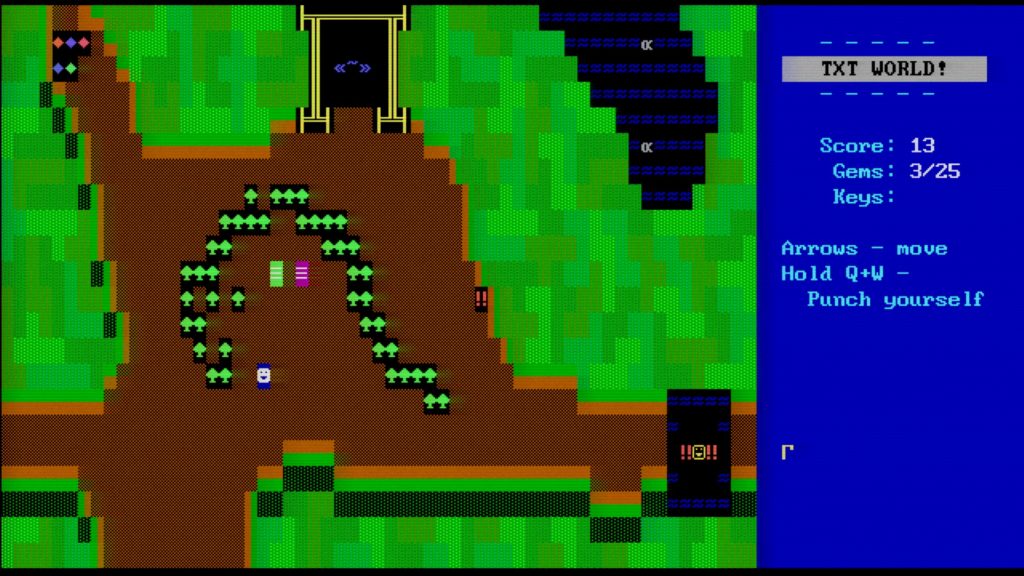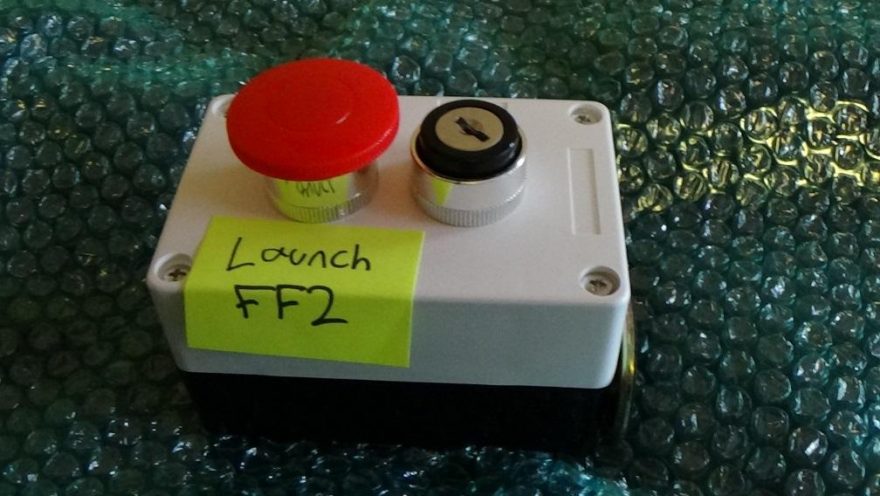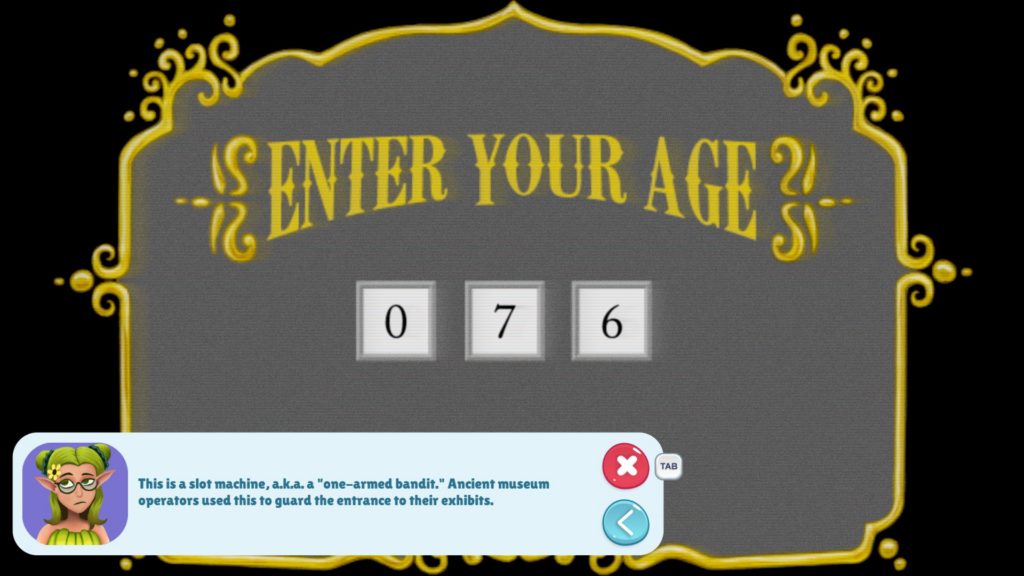How do you follow up a game like Frog Fractions (2012)? That’s the question its creator Jim Crawford had promised an answer to for two years. On December 27th, 2016, he delivered with the release of Frog Fractions 2, which he had hidden away inside a fairy-themed city builder called Glittermitten Grove.
The problem with making a sequel to Frog Fractions is that it’s a game that relies on the unexpected. The original starts off pretending to teach you about fractions with a simple bug-eating game, but then takes a sudden turn and sends you on a wild adventure, riding a dragon across the courtrooms and porn stores of Bug Mars, weaving in and out of different videogame genres. Having that false front was vital to creating the main thrill of Frog Fractions, and unfortunately you can only truly pull it off once, or so goes the logic.
Crawford didn’t have plans to make a sequel to Frog Fractions immediately. He instead spent most of 2013 doing contract work as the programmer and co-designer on Necrosoft’s mobile game Gunhouse (2016) as he “wasn’t ready to be responsible for [his] own thing just yet.” But while he was working on Gunhouse, Crawford was able to percolate the idea of doing Frog Fractions 2, to the point that he had a skeleton of the game mapped out by January 2014. He even knew how he was going to tackle the biggest problem he would face, which wasn’t making the game itself, but figuring out how to create true surprise around it, as he had done with the first game—he would hide the sequel’s identity from everyone.

“But I wasn’t confident in my ability to pull this sort of game off on purpose,” Crawford told me. The first Frog Fractions was made in the spare time he had while the web design company he worked for slowly cut his hours as it went out of business. “I made Frog Fractions almost by happenstance,” Crawford said. Frog Fractions 2 was being made from a plan, and not only that, it was going to be much larger and would require funding. This meant that this time there would be people who were actively invested in the game’s development, and that raised the stakes.
Apprehensive as he was, what ended up encouraging Crawford was his experience writing the script for his Kickstarter pitch video. “A couple of drafts in, it was pretty solid: a funny, bizarre roller coaster ride, like the original game,” said Crawford. “Being able to just knock that out at will was what gave me the confidence that I was able to just do this sort of thing.” Crawford then spent the next three months gathering friends to help out with the Frog Fractions 2 Kickstarter video. “The highlight of this was a day where nine people got together in my living room to film themselves dressed up as time travelers,” Crawford said. Fun as it was, Crawford reckons those three months were the busiest time of his life: “At the end of it I had $70k in my bank account and also a gum infection that my dentist recognized immediately as ‘acute necrotizing ulcerative gingivitis’, caused by stress and poor nutrition.”
What Crawford pitched to prospective Kickstarter backers was “a weird ride I would release someday, under a different name,” a name that wasn’t “Frog Fractions 2.” At the time, there wasn’t much more to it, because that is how Crawford had started out making the original Frog Fractions: “start with a dumb idea, then grow it based on feedback, relying on what my personal fun/funny considers the obvious next move. Do that for a year and you have Frog Fractions,” Crawford explained. This is why, when he began work on Frog Fractions 2 in April 2014, Crawford had a series of prototypes that he hoped to pull together into a mostly coherent package.
It was at this point that Crawford started to realize how lucky he had been when making the first Frog Fractions, as each of its different parts were made as an extension of the part preceding it, meaning that it all fit together with some sort of story. “And since the first part had a protagonist with a dragon friend, the whole game ended up basically being a buddy comedy about these two characters,” Crawford said. The release plan that Crawford had worked out for Frog Fractions 2 meant that it would be hidden away inside Glittermitten Grove, a city builder that acted as a frame game. “City building games, as it turns out, don’t have protagonists, so I don’t get that for free,” Crawford told me. “And by the time I’d figured out what the start of Frog Fractions 2 was going to be, I’d spent a year making a bunch of basically unrelated game prototypes that were varying degrees of fun/funny.”
The one prototype that showed most promised was called “TXT World.” It was a pastiche of ZZT (1991), DROD (1996), and Insanity (1989), “three PC games that I loved, but very few people have played,” Crawford said. He made this prototype out of obscure games to tackle something that was playing on his mind. “Frog Fractions was ‘outsider art’, and after Frog Fractions, I suddenly became very much an insider, and I mentally compensated for this by making my allusions more wide-ranging and esoteric,” Crawford said. He decided to use “TXT World” as the central hub of Frog Fractions 2, throwing a Legend of Zelda structure onto the ZZT-inspired part, while the other games and prototypes could branch off of it as dungeons to explore, with new abilities and collectibles.

“I had a build playable with a hub and some minigame dungeons at PAX 2015, and I showed it to a few people,” Crawford told me. “One of them was Tim Ambrogi, who’d given me some key advice during the development of Frog Fractions 1. (“Take out the tutorial,” he said.) He told me that the main problem with Frog Fractions 2 was that TXT World was a static hub rather than the descent into madness that the first game was.” Crawford hoped that Ambrogi’s advice would once again let him enact a small change that made the game enormously better. Instead, his advice this time around required months of hard work.
“I spent the next few months figuring out a game structure that would provide some ways the hub world could be recontextualized with new kinds of gameplay, to provide a sense that you were moving deeper into the rabbit hole.” This is why, as you progress through TXT World, you move through it in different ways to reach new areas. Rollerskates let you slide along walls, a bridge that can be carried around makes it possible to pass through boundaries, a sword can destroy shrubs blocking paths (and open up secret paths), while at one point your character becomes a snake that grows in length upon eating things.
While the madness of Frog Fractions 2 was taken care of, what it still needed was a protagonist to tie the entire experience up. It was Justin Bortnick, the co-developer of Frog Fractions 2, who found the solution when he recommended that they use the tutorial character from Glittermitten Grove as the protagonist. “We ended up cutting her story arc, but simply having a consistent narrator helped a great deal to make it feel like a singular work,” Crawford said. “By the start of 2016, I had a good sense of the shape of what Frog Fractions 2 eventually became.”
While Crawford and his small team spent the rest of 2016 building the rest of Frog Fractions 2, at the same time, two separate alternate reality games (ARGs) were being ran that would eventually unlock the game in its hidden location. One of the ARGs was based on the idea of having a tiny bit of Frog Fractions 2 in many different independent games, appearing as sigils, which was run by Crawford over a period of two years. “The first sigil went into Kingdom of Loathing in August of 2014, people discovered a sigil in Crypt of the Necrodancer in May 2015, people connected the sigils as a thing appearing in multiple games in January 2016, and the final sigil that connected the two ARGs together was discovered in Firewatch [in November 2016], leading to, as you know, soup videos.”
The other ARG was managed by Bortnick, the Frog Fractions 2 co-developer, who set out to use the ARG to build up an elaborate backstory that could be integrated into the game. “Jim wanted Dark Souls (2011) to be a big inspiration, and that game is really good at communicating a world scale with a small amount of information, so we tried to create a sense of largeness and history within the content drops—as if there was always something more behind what the players had, and even then what they had needed a lot of piecing together,” Bortnick said. “I wrote a lot of backstory and even made maps, none of which ended up being released but just served as reference material.”
It quickly got to the point that Bortnick was running the ARG almost entirely by himself, slowly building the Frog Fractions 2 backstory, but also having to change the story as features from the game were cut. For example, originally, Glittermitten Grove was actually called Faeries vs. Badgers, and so the story involved a race of badgers loyal to the anti-faerie resistance. The badgers were cut due to schedule restraints and so Bortnick had to cut the badgers of the story being told through the ARG too.

Nearer the end of 2016, Bortnick was coming up to busy season at grad school, and had to slow down his work on the ARG. It was around this time that Erica Newman got involved who would take the ARG to its conclusion. Newman was one of the players of the ARG and, as she was based near Crawford in the Berkeley area of California, she was chosen to receive a physical box full of sand and sparkles and mazes. “The intention was for her to document opening the box with photos and video for the ARG players on the internet,” Crawford explained. “Instead, she asked for my permission to commandeer the box to take the ARG players on a side-story, another ARG unrelated to but running simultaneously with the existing one. Since my usual mode of operations is to create chaos and try to tie it together into something coherent only when absolutely necessary, I agreed.”
Newman then began work on her “side-ARG,” mostly managing the music, art, websites, clues, writing, video production, and puzzle testing. The people doing the puzzle design and development for her were Justin Melvin and Micah Edwards. “I wanted to return to the aesthetic of the Frog Fractions game and the early parts of the ARG, which were silly, disjointed, and mysterious,” Newman told me. She started out with this on a small scale, intended as a third ARG, but as her ARG ended up being more active than Bortnick’s, the decision was made by Crawford for it to take over as the main Frog Fractions 2 ARG. This is when Newman “faced the challenge of not spoiling that sense of mystery, while tying up the narrative threads to make some sort of sense.”
The final part of the Frog Fractions 2 ARG ended up with an extremely long puzzle chain that resulted in the discovery of a key that was retrieved from Laura Hall’s escape room in Portland, Oregon. There was also a box labeled “launch FF2” that needed the key. “Narratively, the players had been following the story of the ‘Resistance’ for well over a year, a group that was manipulating timelines to prevent an existential threat called the ‘Decay’ from destroying their world and our timeline,” Newman explained. “It became clear to the players that the Resistance believed that the Decay will follow directly from the release of Frog Fractions 2, and they therefore treated Jim as a criminal to be imprisoned.”
“I wrote the end of the ARG to provide the players a choice to use or destroy the box and key that would launch Frog Fractions 2—and the Decay—into the world,” Newman told me. “In the end, humans are curious creatures, no? I had no backup plan if they decided to destroy that box and key. Things might have gotten even more interesting.” As it went, the players decided to risk the threat of the Decay upon the world in order to finally launch Frog Fractions 2 right then. The only question left was where on earth it was. It didn’t take long for internet sleuths to realize that a big update to Glittermitten Grove coincided with the button press of their decision.
You can purchase Glittermitten Grove on Steam. Frog Fractions 2 is hidden away inside.

